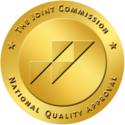Childhood trauma can influence your life in profound ways and often goes unrecognized. Understanding if you have experienced childhood trauma is the first step towards healing.
Children who experience trauma might develop a range of coping mechanisms—some healthy and some unhealthy. Understanding its impact is crucial to identifying past experiences and seeking help. Knowing the full story of what you’ve experienced and how it may have affected you is key to understanding how to best work with your mental health and build a healthy future.
The Impact of Trauma
Trauma during childhood can have lasting effects on emotional and psychological well-being. It can alter how individuals perceive themselves and their relationships.
Understanding ACE Scores and Trauma
Adverse Childhood Experiences (ACEs) refer to potentially traumatic events that occur during childhood, such as abuse, neglect, or household dysfunction. These experiences can include physical, emotional, or sexual abuse, witnessing domestic violence, or living with a parent who struggles with substance abuse. Adverse effects were observed in adults with ACE scores of 4 and higher.
ACEs are significant because they help people understand themselves and understand how early adversity can shape other people’s well-being. Every person responds differently to trauma. But ACE scores provide a way to discuss trauma and better visualize its impact.
The Link Between ACE Scores and Long-Term Outcomes
Research has found a strong correlation between high ACE scores and negative physical, emotional, and mental health outcomes. Individuals with higher ACE scores face an increased risk of chronic illnesses, such as heart disease, diabetes, and obesity, as well as mental health challenges. These can include depression disorders, anxiety disorders, and substance use disorders. People with higher ACE scores may also struggle with relationships, education, and employment, as early trauma can disrupt brain development and the development of coping mechanisms.
Mitigating the Impact Through Early Intervention
The good news is that negative outcomes associated with ACEs are not inevitable. Early intervention and trauma-informed care can make a world of difference. Trauma-informed approaches focus on understanding, recognizing, and responding to the effects of trauma. They prioritize safety, empowerment, and healing.
Fostering protective factors like strong, supportive relationships, access to mental health services, and building resilience can help mitigate the long-term effects of ACEs. Parenting support programs, therapy, and community initiatives have proven effective in reducing the risk of adverse outcomes for children and adults. Understanding ACE scores isn’t just about identifying past challenges—it’s about creating opportunities for healing and growth.
Signs of Childhood Trauma
Childhood trauma can leave deep, lasting effects that can shape a person’s behavior, emotions, and overall well-being long into adulthood. It is possible to endure childhood abuse and not remember it. But knowing common signs of childhood trauma can help with understanding how the effects of it may appear in children or adults.

Children who have experienced trauma often exist in a heightened state of alertness, constantly looking out for potential threats. This is known as hypervigilance. For example, a child might flinch or freeze at sudden movements or loud noises. An adult who experienced trauma might avoid certain environments, like crowded places, because they feel unsafe. This perpetual sense of unease can stem from how the brain is trained to detect danger in response to past trauma, even in situations where no threat exists.
Emotion regulation can become a significant challenge for those with unresolved childhood trauma. A child might have explosive outbursts over minor frustrations or feel an overwhelming sadness that they can’t explain. Adults may find themselves swinging between intense anger and deep despair, or struggling to calm down after a stressful event. These responses are often tied to an overactive stress response system, and small stressors can feel unmanageable.
Early trauma can erode a person’s innate sense of worth. A child who internalizes abuse or neglect might believe they’re inadequate or unlovable. These feelings can carry into adulthood, leading to negative self-talk and a reluctance to pursue goals or take risks.
Dissociation is a coping mechanism many people with childhood trauma develop. It’s a psychological escape, allowing someone to disconnect from pain or distress. A child under stress might seem detached from the world around them. An adult with a trauma history may find themselves “spacing out” during conversations or unable to recall significant chunks of their day. This can be their brain’s way of protecting them from memories or emotions tied to their trauma.
Trauma doesn’t just affect the mind, but the body as well. This can appear as chronic headaches, stomachaches, or other unexplained ailments. For children, physical complaints may increase when they’re anxious or stressed, like getting a stomachache before school. Adults may experience long-term issues, such as muscle tension, migraines, or conditions like irritable bowel syndrome (IBS), all linked to stress and trauma endured early in life.
Living in a constant state of emotional or physical distress is exhausting. Children may seem overly tired or struggle to concentrate at school after a good night’s sleep. Adults often feel drained even after weekends or vacations. This fatigue can stem from the emotional labor of suppressing traumatic memories or managing the symptoms of trauma.
Trauma can disrupt the ability to form and maintain healthy relationships. Children might cling excessively to caregivers or show extreme fear of being abandoned. Alternatively, they could appear withdrawn and reluctant to connect with others. Adults may experience difficulties with trust or intimacy. For instance, someone with unresolved trauma might push people away to avoid rejection or become overly dependent on their partners to meet emotional needs.
Trauma survivors often avoid things that remind them of the event or the pain they endured. A child might refuse to enter a specific room, avoid eye contact, or resist activities associated with trauma. Adults might avoid certain conversations, places, or memories, steering clear of anything that could reignite buried emotions. Over time, this pattern of avoidance can limit their life experiences and personal growth.
Coping mechanisms can become underdeveloped or maladaptive in the wake of childhood trauma. A child might throw tantrums, cry uncontrollably, or act out because they lack the mental tools to process stressful situations. As adults, this difficulty often continues, and they might turn to unhealthy outlets like substance abuse, compulsive behaviors, or avoidance to deal with stress. Healthy coping strategies, such as those learned from holistic therapy, may feel foreign or unattainable without help.
The Relationship Between Addiction and Trauma

Substances often create temporary relief, allowing individuals to escape their reality. However, this relief is short-lived and can lead to a cycle of dependence. The initial coping mechanism morphs into a new trauma as addiction sets in, further exacerbating the original emotional wounds.
Research has shown that those with a history of childhood trauma are significantly more likely to struggle with substance use disorders later in life. Factors such as genetics, environment, and the severity of the trauma can play roles in this connection. Therefore, addressing the trauma in individual therapy can be crucial for successful recovery from addiction.
Types of impactful trauma can vary widely, including physical abuse, emotional neglect, or exposure to domestic violence, each leaving unique scars on the psyche. These experiences can alter brain chemistry, making individuals more susceptible to addiction as they seek to numb their pain. The brain’s reward system, which can be hijacked by substances, becomes a battleground where the remnants of trauma and the lure of addiction collide.
Therapeutic approaches that focus on trauma therapy are essential in breaking this cycle. Techniques such as Eye Movement Desensitization and Reprocessing (EMDR) and cognitive behavioral therapy (CBT) have shown promise in helping individuals process their traumatic experiences while simultaneously addressing their substance use. By fostering a safe environment where individuals can confront their past, these therapies not only aid in healing emotional wounds but also empower individuals to develop healthier coping strategies that do not involve substances, paving the way for a more sustainable recovery journey.
Heal From Addiction at Eagle Creek Ranch Recovery
Understanding these signs is an essential step in recognizing the impact of childhood trauma, not only in others but also within yourself. If you or someone you know exhibits these behaviors, it’s important to approach the situation with empathy and patience. Trauma-informed care, professional therapy, or counseling can help individuals process their experiences, rebuild their sense of self, and establish healthier coping mechanisms.
If you find yourself identifying with the signs of childhood trauma or struggling with addiction, seeking help is paramount. Eagle Creek Ranch Recovery offers a comprehensive approach to healing that addresses both underlying trauma and addiction recovery.
Healing is not linear. But with support, it’s possible to move toward a more fulfilling and balanced life. Contact us today to learn more.
https://pmc.ncbi.nlm.nih.gov/articles/PMC8109838/
https://pmc.ncbi.nlm.nih.gov/articles/PMC6973527/
https://pmc.ncbi.nlm.nih.gov/articles/PMC8096135/
https://pmc.ncbi.nlm.nih.gov/articles/PMC3051362/
https://pmc.ncbi.nlm.nih.gov/articles/PMC3951033/
https://pmc.ncbi.nlm.nih.gov/articles/PMC6217870/
https://pmc.ncbi.nlm.nih.gov/articles/PMC8882933/

Clinical Director
Kendall Maloof is the clinical director at Eagle Creek Ranch Recovery. She is a licensed marriage and family therapist and has held multiple leadership roles before settling here at Eagle Creek. Kendall received her master’s degree in marriage and family therapy from the Chicago School of Professional Psychology in 2016. Her career in mental and behavioral health began in 2014 when she took up internships in both the nonprofit and for profit sectors. She interned at multiple reputable companies, such as The Living Success Center and 449 Recovery in California.
In 2019, Kendall became the clinical director of Sunsets Recovery for Woman, a dual diagnosis program in southern California. Kendall is a natural leader. She has an incredible ability to problem solve and stay calm in any situation. Kendall never fails to show up when she is needed, and her calm demeanor makes her team and clients feel at ease. Eagle Creek Ranch Recovery is proud to have Kendall as our clinical director.



